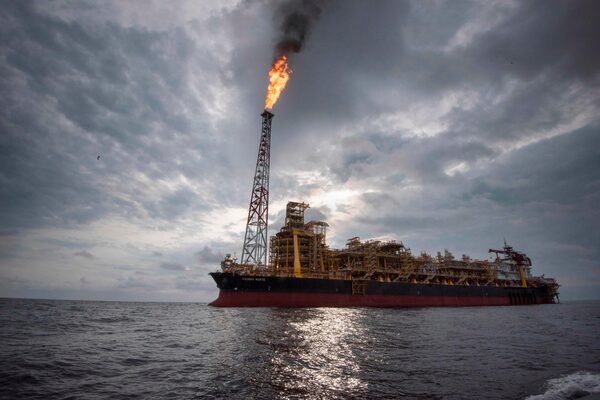
This file photo taken on Nov. 8, 2018 shows the Kaombo Norte, a Floating Production Storage and Offloading vessel (FPSO) operated by Total about 250 kilometres off the coast of Angola in the Atlantic Ocean.RODGER BOSCH/AFP/Getty Images
Angolan oil sales are bouncing back from a dismal summer as Asian refining margins have recovered and demand is rising ahead of a major change in marine fuel standards in 2020, traders say.
Crude from Africa’s second-largest exporter after Nigeria flowed to its top customer China in the lowest volumes in nearly five years in July, Refinitiv Eikon data shows.
“August is shaping up to be even weaker than June and July, but September has a strong tone,” one major seller of Angolan crude told Reuters.
“We believe the levels in demand we are seeing for September are related in part to the interest in specific grades suitable for refining into IMO-compliant bunker fuels,” the seller said, adding that the Cabinda, Kissanje and Hungo grades especially suited to the new fuels were selling fast.
From Jan. 1, International Maritime Organization (IMO) rules for marine fuel, also called bunker fuel, will bar ships from using fuels containing more than 0.5 per cent sulphur – compared with 3.5 per cent currently – to reduce air pollution.
“As refiners increase their efforts to look for alternatives to present bunker fuel, Angolan grades will improve,” said Ehsan Ul-Haq, lead analyst for oil research and forecasts at Refinitiv.
Angola’s poor performance this summer came as backwardation in the oil market has made prompter deliveries more expensive and discouraged shipping crude long distance, while China stocked up on similar Iranian crudes ahead of U.S. sanctions and refining margins stayed low.
Traders said the pace of exports to China for July was roughly in line with June but deteriorated further the next month.
“We bought even less in August,” a major Chinese buyer said.
Angola’s medium-to-heavy grades, which tend to yield larger quantities of middle distillates such as gas oil and jet fuel, have drawn higher demand in 2019 as U.S. sanctions removed comparable Venezuelan and Iranian varieties.
Differentials rose to all-time highs before beginning a months-long slide in June. Traders say the situation is now steadying as refining margins have improved.
Asian margins have lifted in recent weeks, pushing up demand from Chinese independent refiners – known as “teapots” – for crudes from Russia, Oman, Brazil as well as Angola.
“Angolan demand is driven by Chinese teapots that started to buy again this month,” one trader said. “Teapots basically reduced to stopped buying crude for two months prior. After margins improved, they changed their mode.”
Margins for gas oil, the base for diesel and jet fuel, hit an eight-month high of $17.09 a barrel on Monday.
“(Angolan oil’s) fate will also depend on distillate prices in the next few months,” added Ul-Haq of Refinitiv. “If distillate prices continue to move higher, using Angolan crudes could be a good option.”